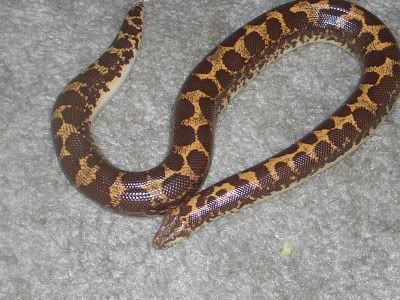- Joined
- Apr 9, 2004
- Messages
- 1,600
I got this girl from Oldhag (Michelle).
She is my first Kenyan Sand Boa (Eryx colubrinus loveridgei).


She is my first Kenyan Sand Boa (Eryx colubrinus loveridgei).



